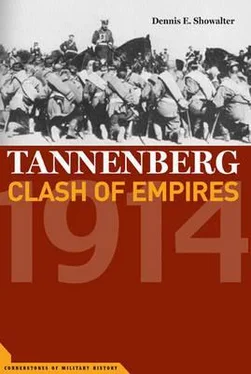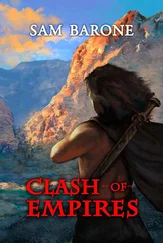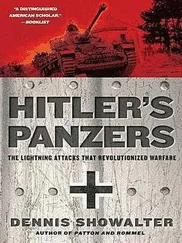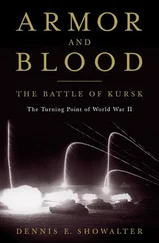Not merely the great powers, but such middle-sized states as Belgium and Serbia, Greece and Rumania, possessed a level of agency in 1914 far greater than that they could exercise at the twentieth century’s end. They used that freedom to overhaul their military systems and increase their military capacity. Edward Hermann and David Stevenson have demonstrated that the near-exponential expansion of armed forces after 1905 was accompanied by an obsessive symmetry in their structuring. Not only did each government anxiously watch all the others for signs of some innovation worth copying. Each high command was all too conscious of its own perceived shortcomings. With no state believing itself able to withstand a first strike, conciliation was at a corresponding discount not only in Berlin, but in Vienna, Paris, London, St. Petersburg, Belgrade—even Brussels, as a rearming Belgium prepared to defend its neutrality by force against all comers.
Yet for all the sound and fury, Europe continued to dodge the bullet. Crises came and went; crisis management techniques repeatedly proved their equal. Armies drilled and paraded; war plans remained in General Staff pigeonholes. The summer of 1914 was one of the calmest periods in a decade. When Archduke Franz Ferdinand, heir to the Dual Monarchy’s throne, was assassinated in an obscure provincial city on June 28, initial reactions in foreign offices, war ministries, and newsrooms alike reflected nothing so much as a sense of déjà vu. It was just one more damn fool thing happening in the Balkans: the stuff of speeches and headlines for a week or two, music-hall jokes for a little longer. When on the morning of August 30, the red notices that even illiterates knew meant mobilization began going up on official bulletin boards throughout Russia, no one, even the immediate participants, was quite sure what had happened. At 5 P.M. on July 31, Germany responded. War’s iron dice rolled across Europe as the lamps went out one by one. This is the story of the twilight.
A book eight years in the making accumulates a corresponding structure of personal and intellectual debts. Clara Anne, Clara Kathleen, and John bore with good grace the regular disappearances of their husband and father into the arcanae of an era long past. Colleagues and students at Colorado College accepted the highs and lows accompanying the project with no more than an occasional, “Aren’t you finished yet?” College President Gresham Riley, Deans Glenn Brooks and David Finley, and successive research committees were more than generous with financial support and released time. History department chairs Robert Mcjimsey and Susan Ashley earned my repeated gratitude for their empathy in discussing course schedules and administrative demands.
The reference staff of Colorado College’s Tutt Library, in particular interlibrary loan librarians Susan Connolly, Kim Miklofsky, and Diane Burgner, once again did wonders in unearthing obscure works from unlikely locations. Sheila Fuller’s typing of the final manuscript relieved much of the last-stage anxieties accompanying authorship. At the publishing level, Jim Thorpe demonstrated once again why he is among the Atlantic world’s best editors of military history. His questions, comments, advice, and encouragement have been crucial from start to finish of this project. I owe special thanks as well to someone I have never met: Pamela Chergotis, the copy editor who saved me from serious professional embarrassment by catching numerous lapses in argument and consistency.
I owe particular debts to three people. Louis Geiger, my first department chairman, showed me that scholarship is a necessary element in the liberal arts college. Denys Volan of the University of Colorado, Colorado Springs, exemplified learning brought alive in the classroom. History department secretary Judy McClow typed early drafts, provided valuable stylistic suggestions, and helped bring perspective to a complex enterprise. Tannenberg is dedicated to them, with affection and admiration.
Finally, I wish to thank Paul Merzlak of Brassey’s for suggesting and sponsoring this paperback reprint and Diantha Thorpe for making the rights available.
Why a book about Tannenberg? Can anything useful possibly be said about a battle which began a war but did not end it, a battle whose very place names are lost to geography and history alike? Tannenberg in fact offers material for analysis on three levels. It is a significant case study of the problems facing armies in the initial stages of a major war. First battles tend to be neglected, except as examples of how not to proceed. 1Students of men in war, like John Keegan and Richard Holmes, tend to focus on armies that have a spectrum of experiences behind them. Agincourt, Waterloo, the Somme—none were fought by greenhorns on either side. Even the British New Armies had well over a year’s experience in uniform. But all wars have a beginning, and performance in a first battle can often mean that there will be no second chance. France in 1940 is only the most obvious example of that particular truism. 2
The opening rounds of a come-as-you-are war highlight the relative success—or failure—of armies in preparing for their primary task. The opening days and weeks of war test a nation’s military system and its military institutions in ways far greater than in later stages, when experience begins taking over and soldiers at all levels learn when and how to break the rules. Europe’s greatest military powers in the twentieth century have been Germany and Russia. Both had forty years to prepare for the first round in East Prussia. The details of their successes and failures remain correspondingly relevant to students of war and society.
Readers will note that the operational chapters of this work are presented from a German perspective. The Russian army of World War I is the subject of an increasing number of major monographs. Bruce Menning discusses its doctrinal antecedents, David Jones its operational performance, Allan Wildman its collapse. William Fuller is completing a major work, based on previously unavailable archival sources, on the history of Russian strategic planning. The army of the Second Reich, however, is more often studied in its political or social contexts than as a military instrument. One of the major reasons for undertaking this study was a desire to evaluate the kaiser’s fighting men as they made the transition from peace to war. The scale of the Tannenberg campaign offers opportunities to integrate case studies at the tactical, operational, and strategic levels into a framework small enough to be more readily comprehensible by non-specialists than the amorphous fighting on the western front.
Tannenberg had mythic properties as well. The victory in East Prussia stood comparison with Verdun as the most familiar battle of World War I in German public opinion. The legends and hopes clustering around it helped shape attitudes until the very end of World War II. Even today a remnant of the tale lives on. Poland, a country which did not exist when Tannenberg was fought, remembers well that the battle borrowed its name from a centuries-earlier encounter of Germans and Slavs—one with a far different ending. 3
Tannenberg was, finally, a clash of empires. Recent discussions of the origins of World War I have taken two forms. One emphasizes the war’s accidental nature. It postulates, with an obvious eye on the present, the existence of mutually antagonistic alliance systems whose rivalries are largely generated by internal stresses of the states involved. Essentially artificial, the hostilities are all the more inflexible because of that fact. Eventually a small event on the periphery sets in motion a chain reaction, drawing the great powers and their clients alike into a war no one wants or expects. 4
Читать дальше












